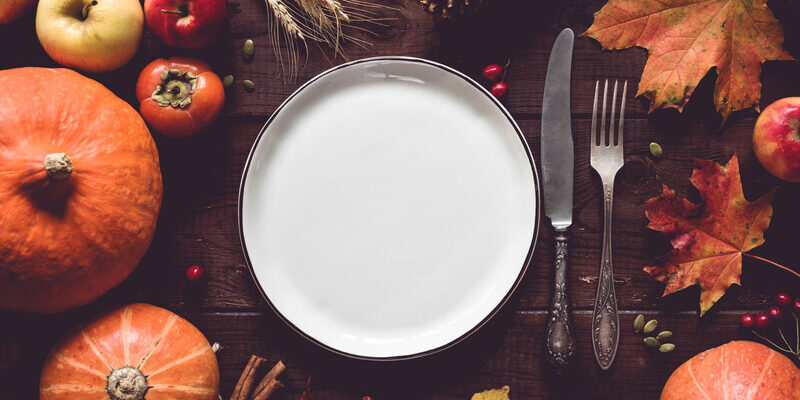Health benefits of fall flavors
By Danielle Johnson RDN, CDN, RYT
A change in season means a change in fresh, ripe produce! Fall provides us with plentiful produce to choose from, bursting with flavors and health benefits! Below is a list of common fall produce items and their nutrients (not limited to what is listed here):
Apples – 1 medium apple provides 95 calories, 4.3gms fiber (16% of the daily value) and 8.4mg vitamin C (11% of the daily value). It is also a powerhouse of a variety of phytonutrients that are shown to be beneficial to prevent cardiovascular disease by lowering LDL levels. Some of these phytonutrients in apples have been shown to benefit control of blood sugar.
Food ideas – add diced apples to salad, braise chopped apple with cabbage, slice apples with cheese or peanut butter, pan fry sliced apples with cinnamon and honey.
Grapes – 1 cup of grapes provides 104 calories, 22mcg vitamin K (25% daily value), 0.19mg copper (21% of daily value), 0.11mg B2 (8% of daily value) and is another powerhouse of phytonutrients shown to benefit healthy blood sugar, increased longevity (specifically from resveratrol), improved cognition, and cancer prevention (flavonoids, anthocyanins, fiber).
Food ideas – add to fruit salad or green salad, slice and add to curry, pair with cheese or nuts, slice and add to a whole wheat grilled cheese.
Pears – 1 medium pear provides 100 calories, 5.5g fiber (20% daily value), 0.15mg copper (17% daily value), 7.65mg vitamin C (10% daily value), and 7.8mcg vitamin K (9% daily value). Pears have antioxidant and anti-inflammatory benefits from a variety of phytonutrients, and due to high fiber content, they may be helpful in preventing type 2 diabetes, cardiovascular disease, and cancer.
Food ideas – combine with mustard greens, watercress, leeks, and walnuts for a delicious salad, serve with goat or blue cheese as a unique dessert, chop pears and add to oatmeal or yogurt with ginger and honey, core pears and poach in pear juice.
Brussel sprouts – 1 cup brussels sprouts provide 56 calories, 4.6gms fiber (15% of daily value), an excellent source of vitamin C & K (>100% daily value), very good source of folate, B6, manganese, choline, copper, B1, phosphorus, omega 3 fats, potassium (11-25% of daily value), good source of iron, B2, B5, magnesium, vitamin A, B3, calcium, and zinc (5-10% of daily value). They contain a high amount of the phytonutrient glucosinolate, which is cancer protective.
Food ideas – roast with olive oil salt and pepper, shred and combine with red onions, walnuts, goat cheese for a delicious salad, shred and sauté with lemon juice olive oil and seasoning, add to soups and stews.
Cauliflower – 1 cup cauliflower provides 30 calories, 2.6gms fiber (10% daily value) and is an excellent source of vitamin C, K, folate, B5, B6, a very good source of choline, omega-3 fats, manganese, phosphorus, biotin, and a good source of B2, B1, potassium, B3 and magnesium.
Food ideas – chop and eat raw with hummus or other dip, puree into a soup, use as a “pizza crust”, use in place of rice or potato, add to stir fry, combine with pumpkin seeds craisins and walnuts for a fun salad.
Sweet potato – 1 cup sweet potato provides 180 calories, 6.6gms fiber (24% daily value – this helps control blood sugar!), an excellent source of vitamin A, very good source of vitamin C, manganese, copper, B5, B6 and a good source of biotin, potassium, B1, B2, B3 and phosphorus. Sweet potatoes are a high source of anthocyanin, providing powerful anti-inflammatory benefits. They also are a high source of beta carotene, a powerful antioxidant!
Food ideas – puree cooked sweet potato with banana and cinnamon and top with chopped walnuts, cube cooked sweet potato and mix with chicken, broccoli, raisins, and vinaigrette dressing, bake a sweet potato and eat cold as a snack.
Pumpkin – 1 c pumpkin provides 137 calories, 7gms fiber, an excellent source of vitamin A, K, E, and copper, a good source of vitamin C, magnesium, iron, b2, b6 and potassium. Pumpkins are also a great source of the powerful antioxidants alpha and beta carotene!
Food ideas – add pumpkin puree to soup or chili to give it a unique creaminess, cube and roast with other vegetables, mix with broth, seasoning and parmesan cheese and pour over whole wheat pasta with veggies, blend with chickpeas and season for a unique twist on hummus.
Butternut squash – 1 c butternut squash provides 82 calories, 7gms fiber, an excellent source of vitamin A & C, very good source of vitamin E, b1, b3, b6, folate, magnesium, potassium & manganese. Butternut squash is another source of antioxidants beta-carotene, beta-cryptoxanthin and alpha-carotene.
Food ideas – cube and roast with olive oil and sea salt, homemade butternut squash “fries”, top salad with roasted squash, puree into baked goods or soups, mash and mix with milk, olive oil and seasoning for a twist on mashed potatoes.
Herbs & spices that pair well with fall cooking:
Sage, ginger, rosemary, turmeric, cilantro, cumin, thyme, paprika, cinnamon, allspice, cardamom, cloves, nutmeg
These different foods are loaded with vitamins, minerals, and other healthy plant elements. There are many nutrients that overlap amongst the different produce items, but there are also many differences. Aiming for a variety of foods will provide an array of nutrients, but also an array of flavors. Eating healthy can be enjoyable, creative, and fun – don’t be afraid to try different things to make meal/snack time more exciting!
Danielle Johnson RDN, CDN, RYT is a registered dietitian and a graduate of Long Island University CW Post. She works in the Bariatric Center of Excellence at Mather Hospital where she specializes in surgical weight loss and medical weight management. She also is completing her Master of Science degree in Integrative Nutrition at Stony Brook University.

